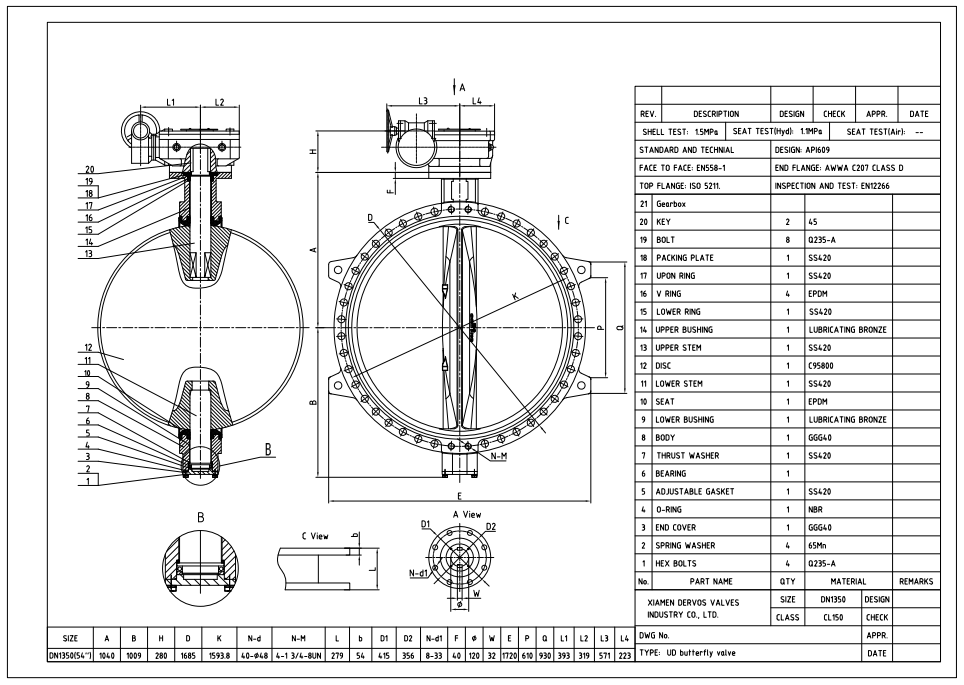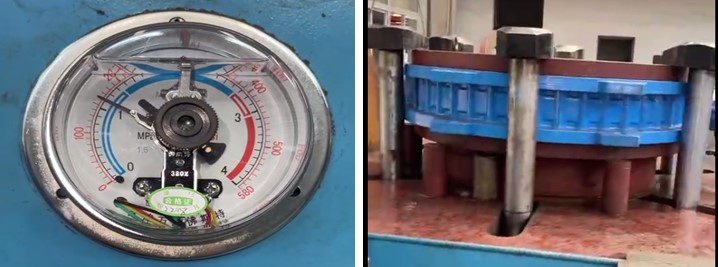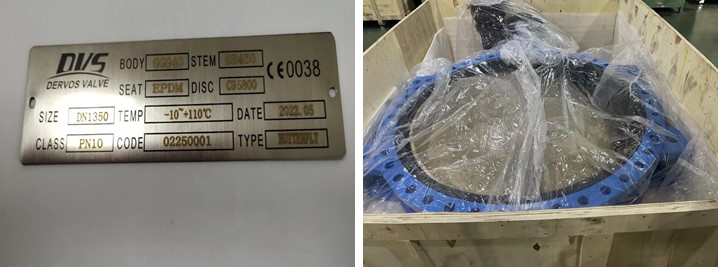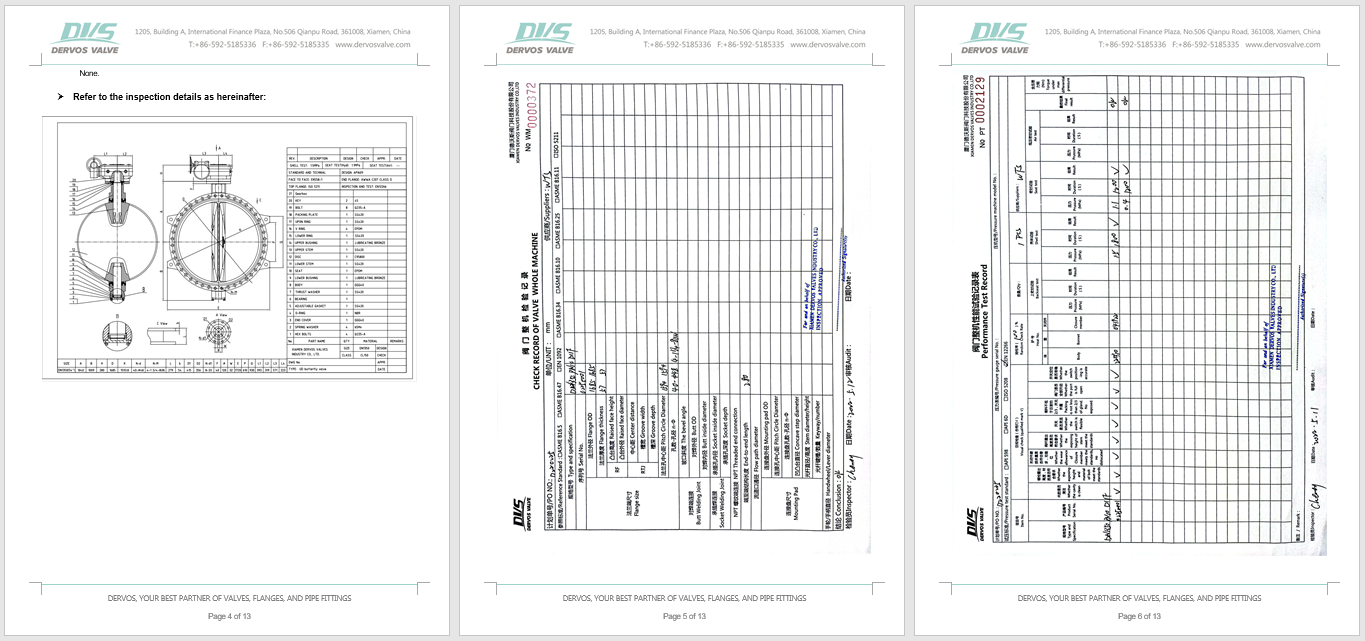DN1350 4 Bar butterfly valve is made according to API 609 standard. The valve body is made of GGG40. It has the structural characteristics of midline type. Its connection mode is flange connection according to AWWA C207 Class D. And it has gearbox operation mode.
Payment:
30% when order confirmed, 70% before shipmentProduct Origin:
ChinaColor:
CustomizationShipping Port:
Shanghai, ChinaLead Time:
30~60 days Ex Works after order confirmationMaterial:
GGG40Method of Operation:
G.OProduct Description
|
Type |
Butterfly Valve |
|
Size |
DN1350 |
|
Pressure |
4 Bar |
|
Connection |
Flange connection according to AWWA C207 Class D |
|
Operation |
G.O |
|
Body Material |
GGG40 |
|
Design Norm |
API 609 |
|
Face to Face |
EN558-1 |
|
End Flange |
AWWA C207 CLASS D |
|
Top Flange |
ISO 5211 |
|
Test & Inspection Code |
EN12266 |
|
Applicable Medium |
Water, Oil and Gas |
Features
1. Simple structure, small size, light weight, low material consumption, and small installation size;
2. Easy and fast to operate. It also has excellent flow regulation function and sealing performance.
Technical Drawing

Dimension Checking

Pressure Testing

Painting

Nameplate & Packing

Inspection report





If you are interested in our products and want to know more details,please leave a message here,we will reply you as soon as we can.